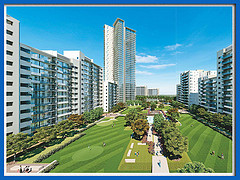Advantages like available skilled workforce, a high quality of living and better career prospects are at Bengaluru but factors like the cost of real estate and ready access to international destinations also matters a lot.
Services such as call centers, transcription, data processing, online education, etc are included in ITES which has made a huge impact on international workflow into India, mainly because of low communication costs and the financial sense behind outsourcing non-core activities. It is an obvious advantage for any modern city to have a significant presence of this industry, which creates white-collar, high-profile jobs and has remarkable effects on its real estate market.
Commercial developments in the city have been done by the private sector and the Bangalore Development Authority (BDA), which controls the growth process of the city.
The city’s commercial market has three spatial limits – central business district (CBD), suburban and peripheral. Bengaluru has no true concept of a CBD which resulted in business growth from MG Road to other main roads such as Residency Road, Richmond Road and Brigade Road, Infantry Road and Cunningham Road.
Some of the prominent streets in prime off-CBD areas in Bengaluru are Commercial Street, Infantry Road, Cunningham Road, Richmond Road, Residency Road, Millers Road, St Mark’s Road, Vittal Mallya Road and Lavelle Road. The advantages they offer are reduced congestion, the availability of space and proximity to the City Centre.
Bengaluru suburbs are classified as areas near to Airport Road, Koramangala, Indira Nagar and Jaya Nagar. The peripheral areas consist of Bellary Road, Whitefield and Bannerghatta Road.
